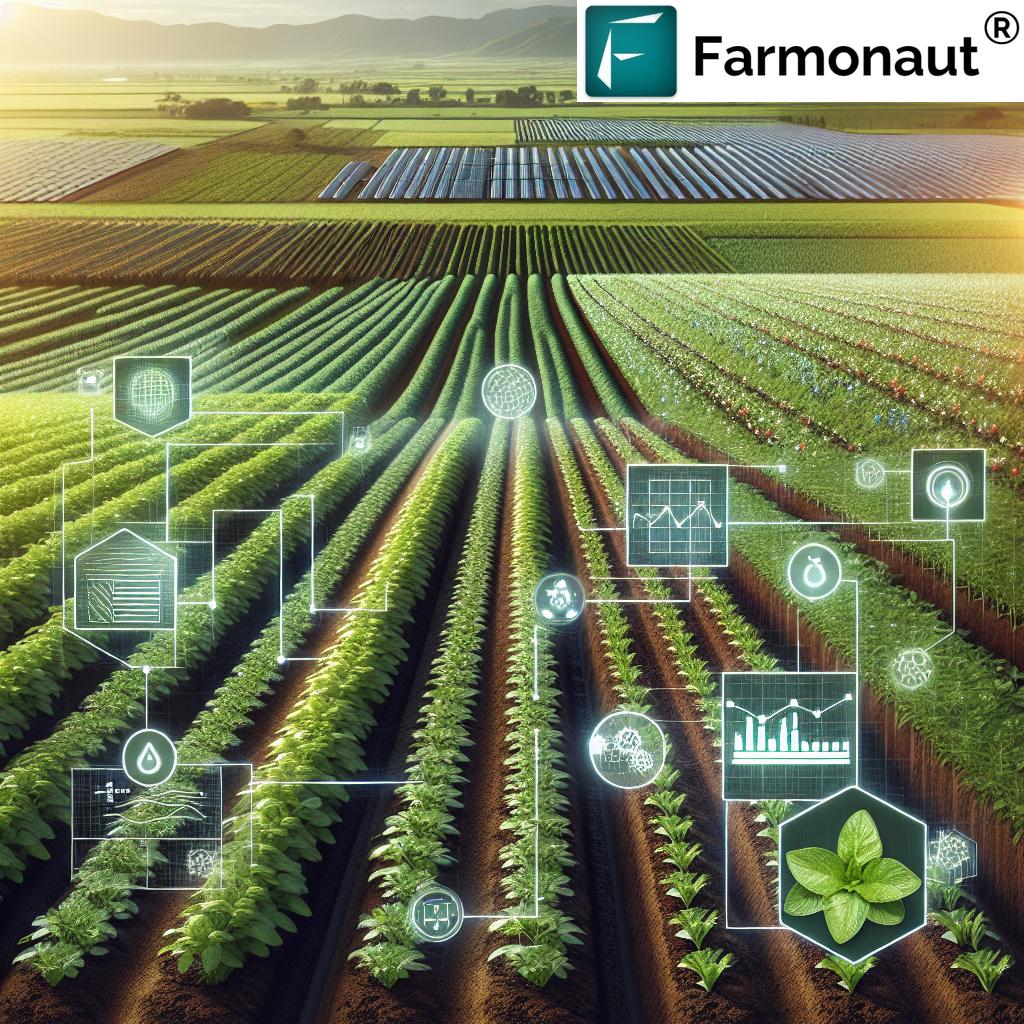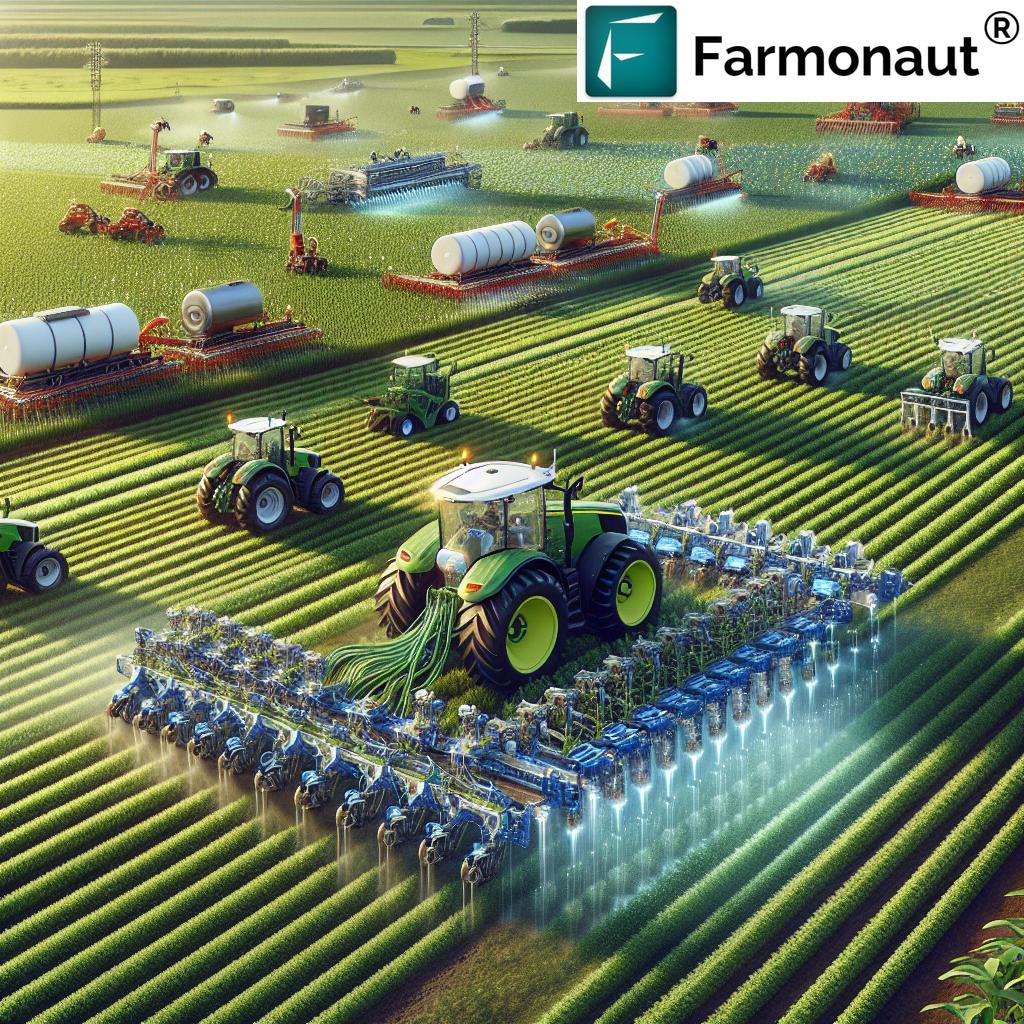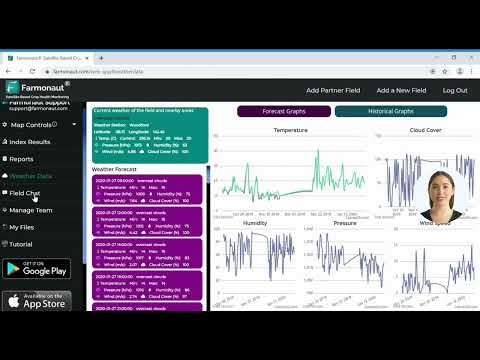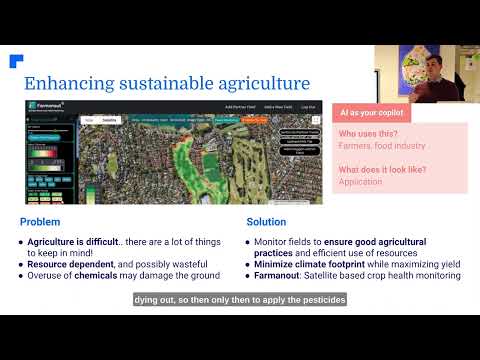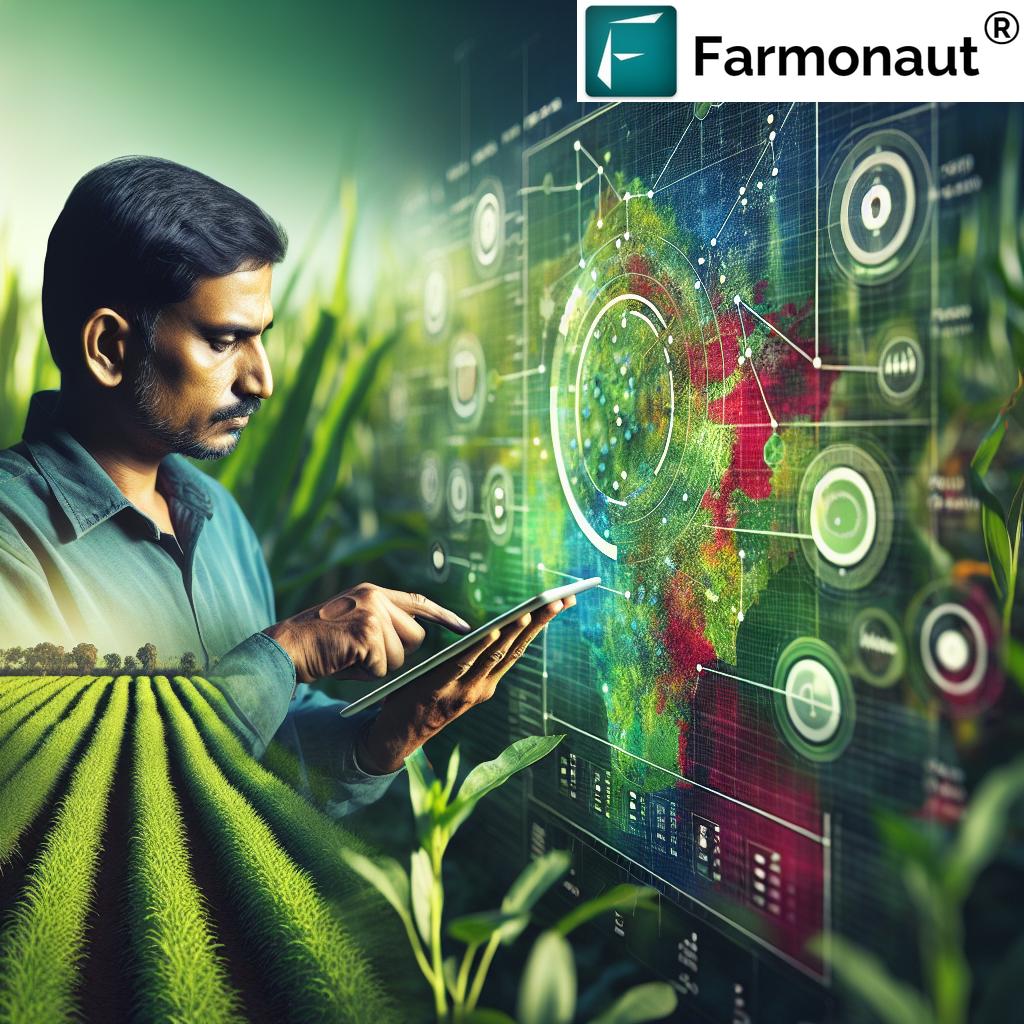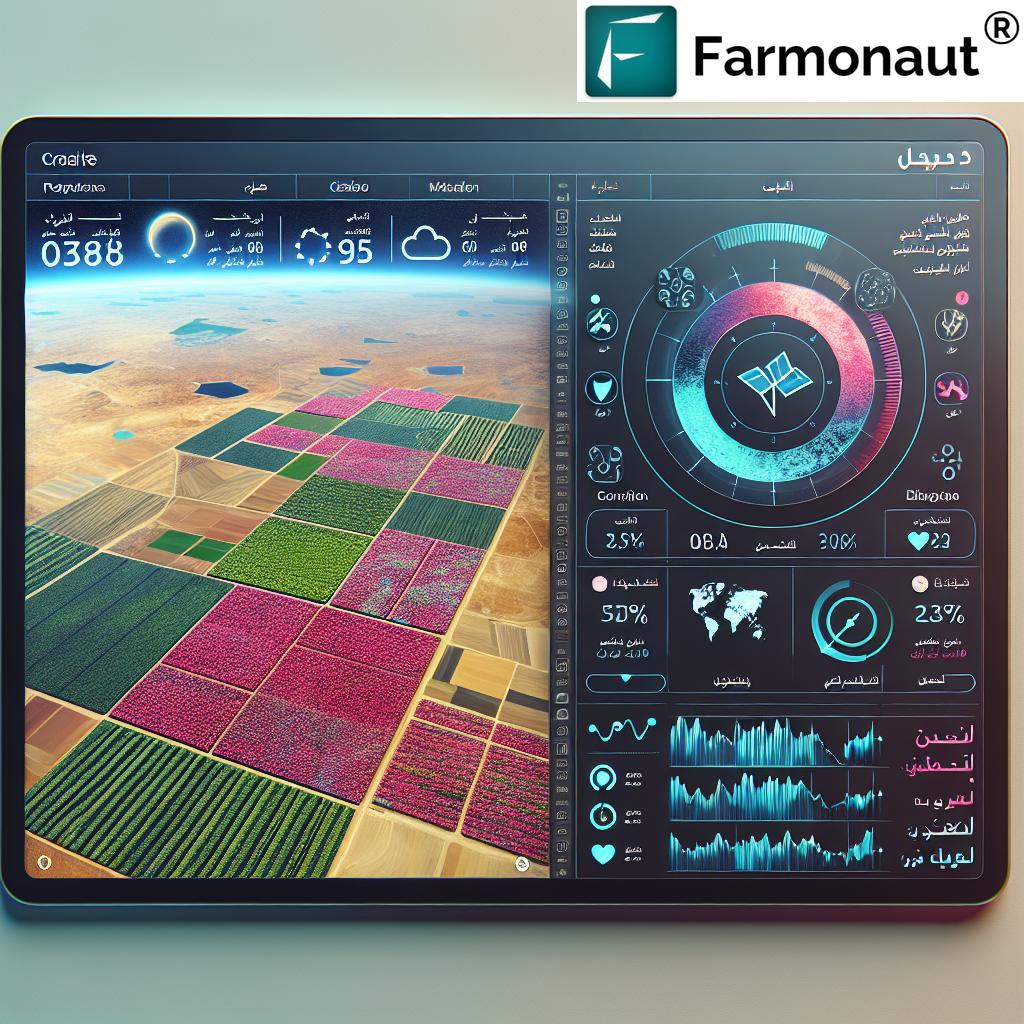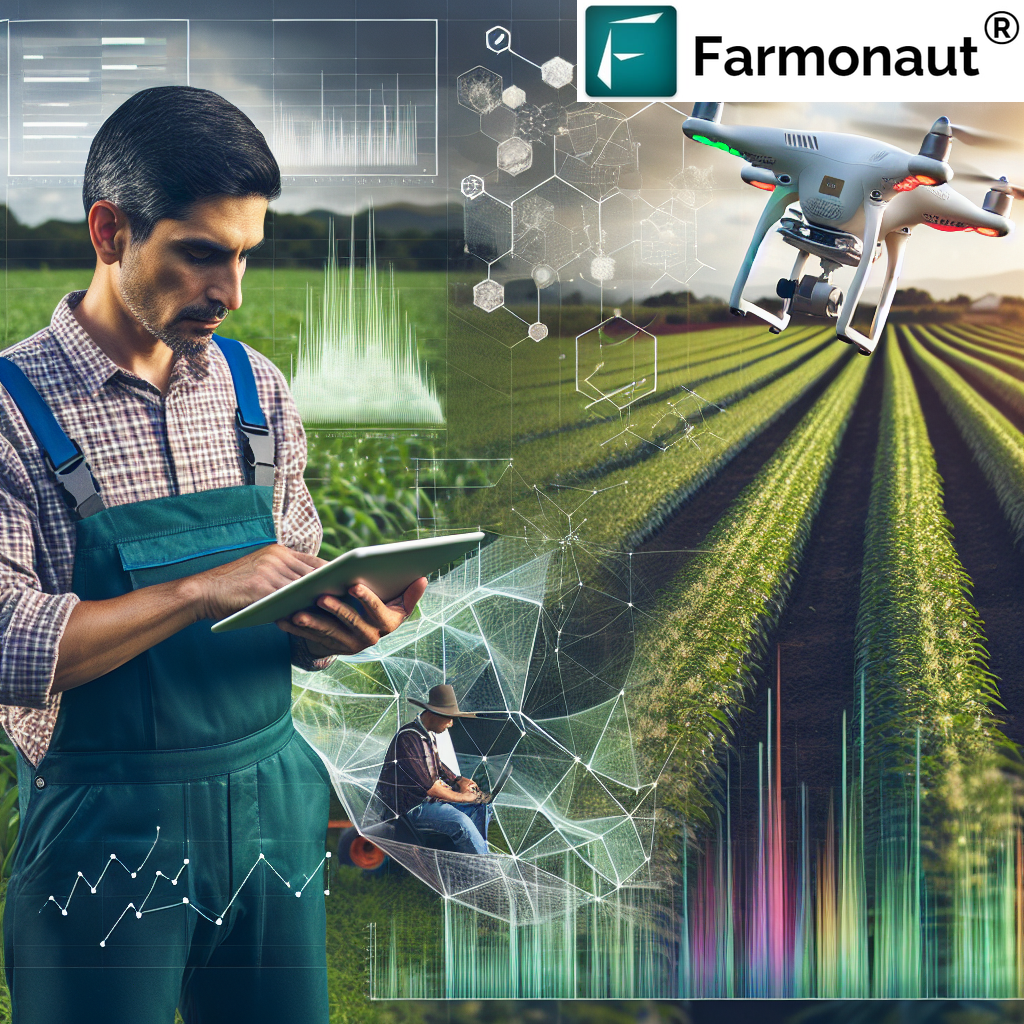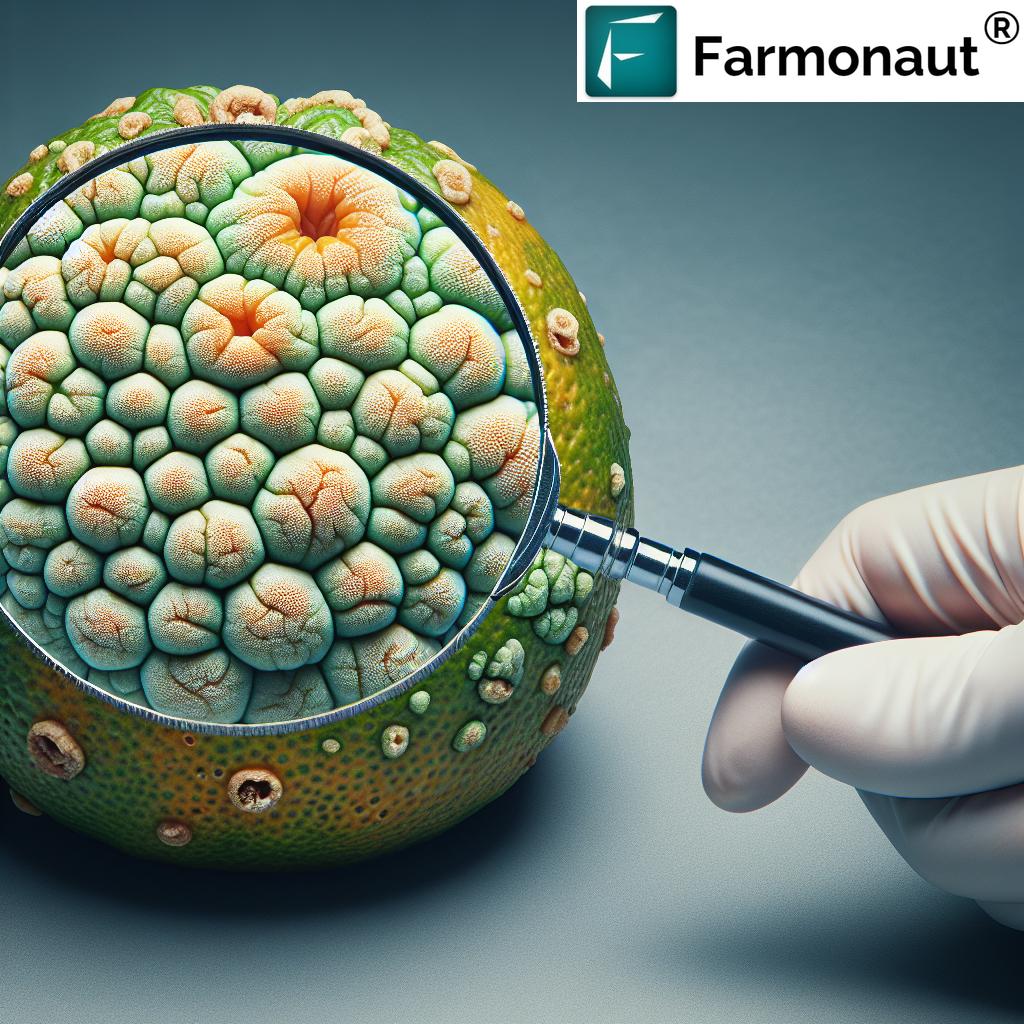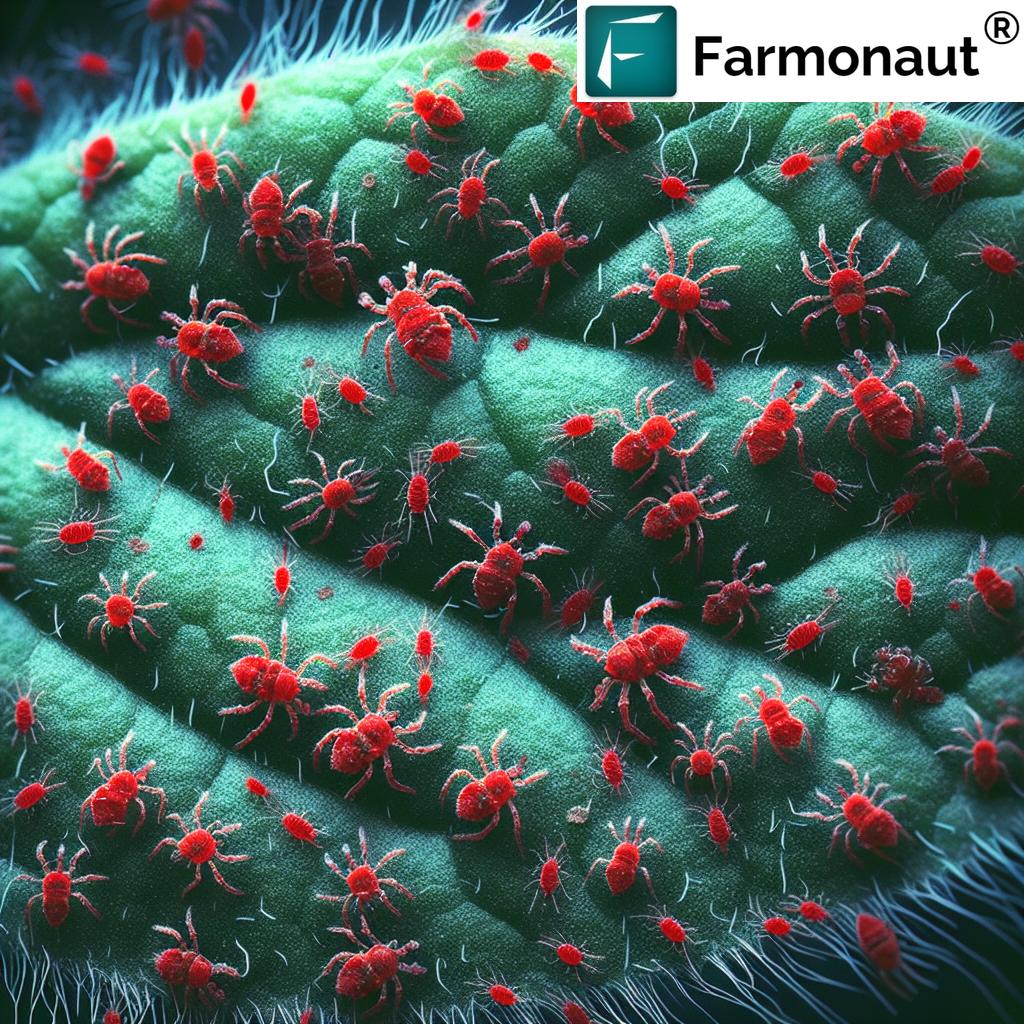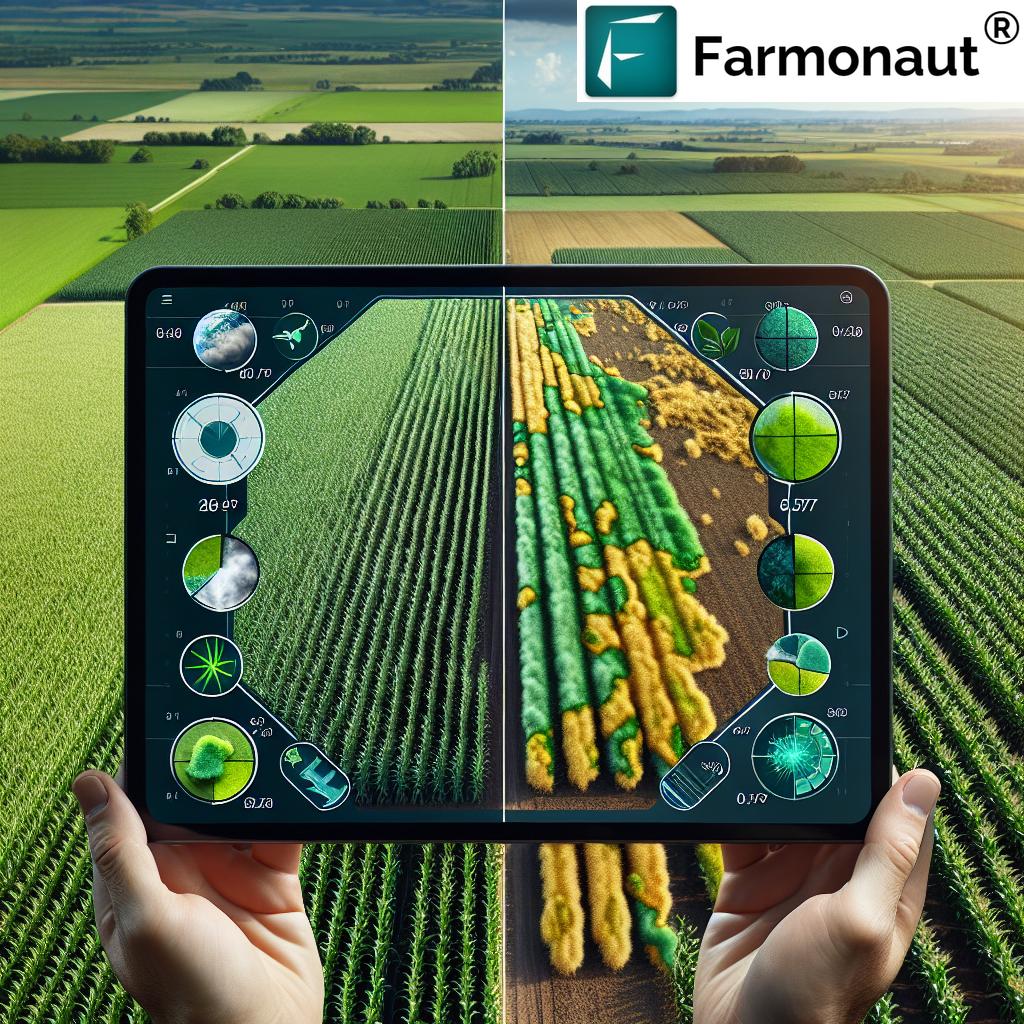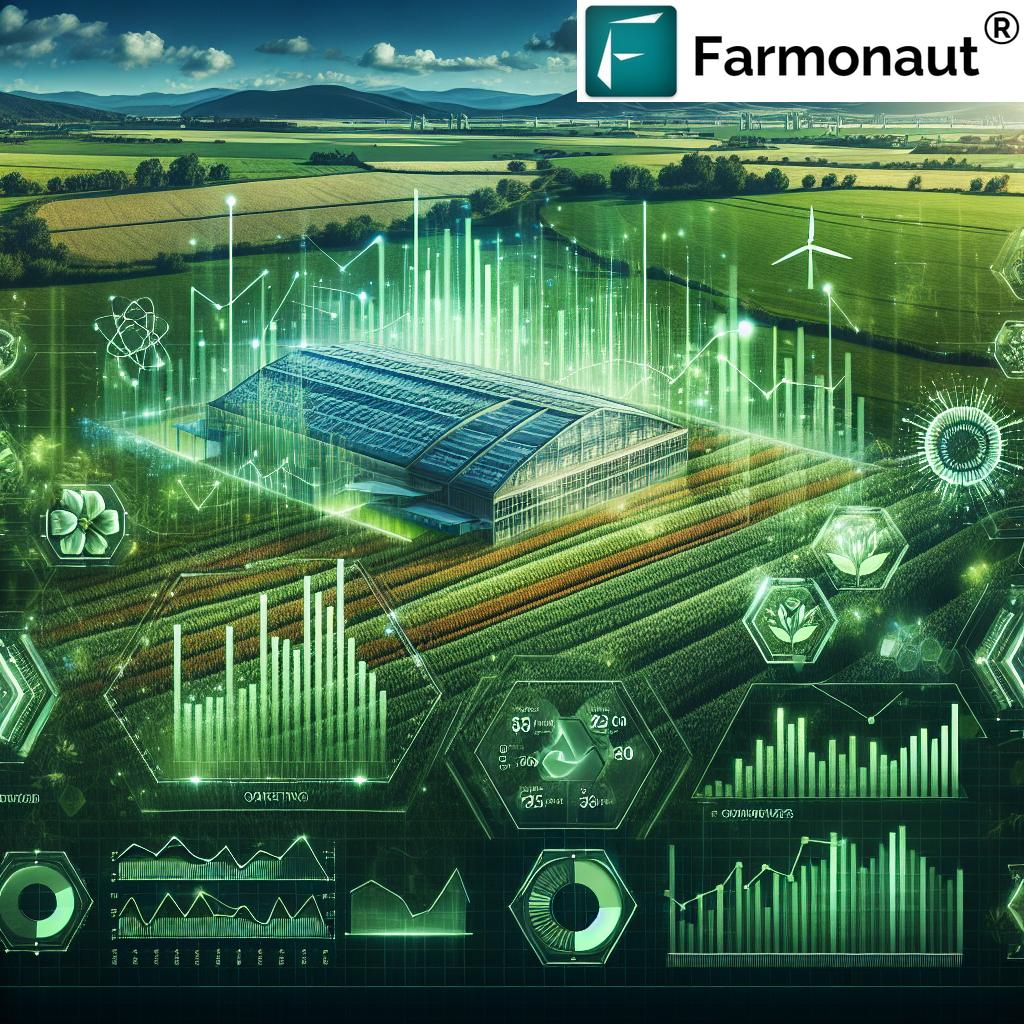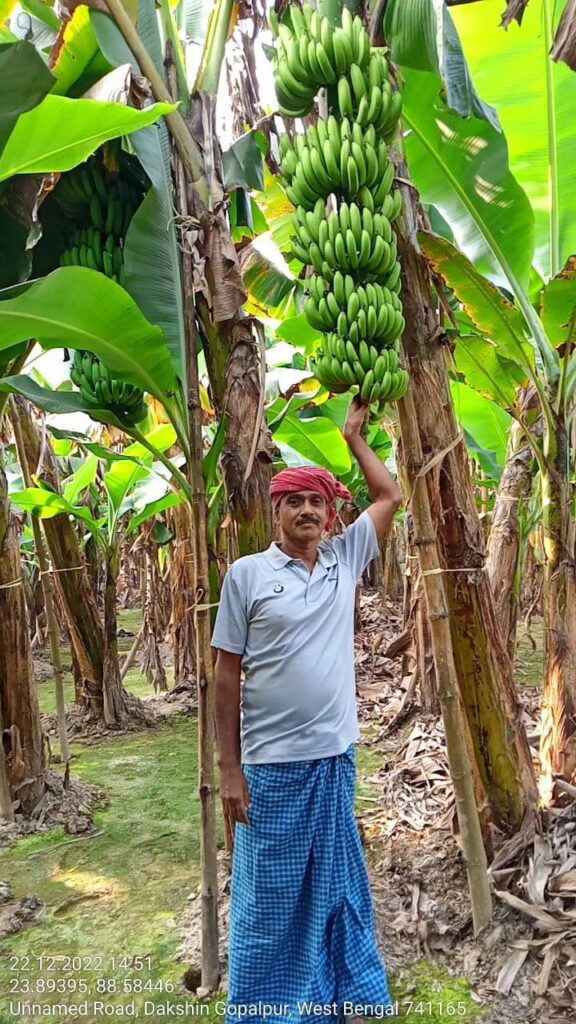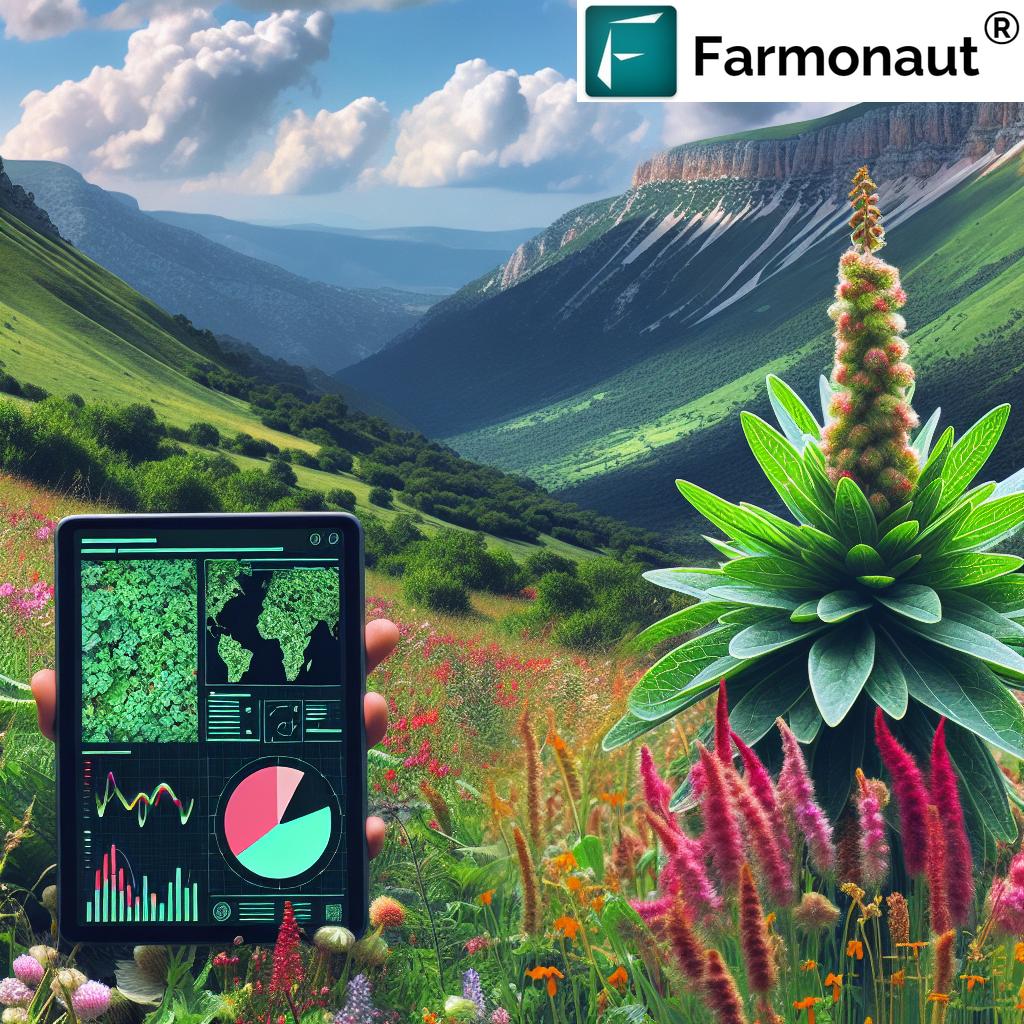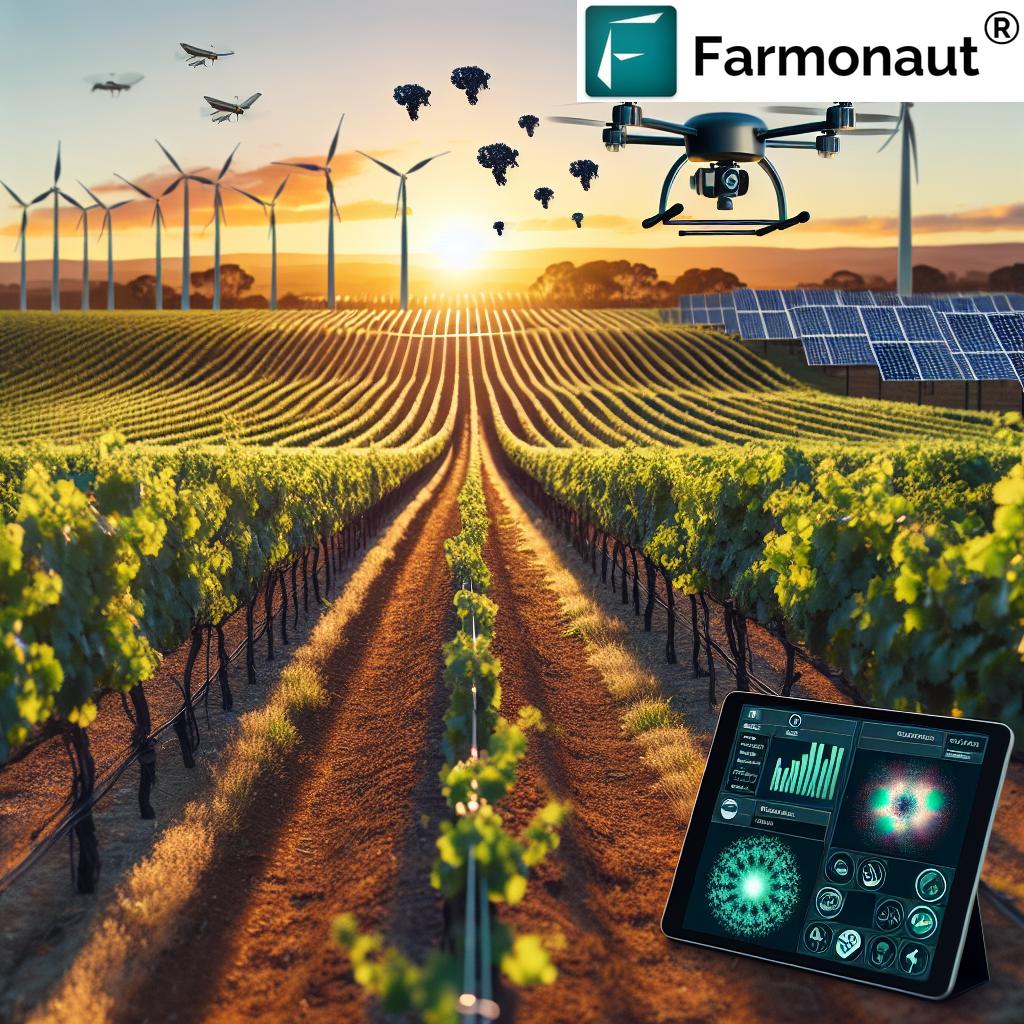Smart Agriculture Farming: 7 Shocking Yield-Boosting Tech
Table of Contents
- Introduction: The Era of Smart Agriculture Farming
- Trivia: Did You Know?
- Overview: What Is Smart Agriculture?
- Comparison Table: Key Smart Agriculture Technologies
- 7 Shocking Yield-Boosting Smart Agriculture Tech
- Applications: Precision in Every Field
- Benefits: Why Choose Smart Agriculture?
- Challenges and Considerations in Precision Farming
- Farmonaut: Powering Affordable, Accessible Smart Farming
- FAQ: Smart Agriculture Uncovered
- The Future: Smart Agriculture & Sustainable Food Security
Introduction: The Era of Smart Agriculture Farming
Welcome to the new era of smart agriculture farming, where technology and tradition blend to cultivate a future of efficiency, sustainability, and remarkable yields. As farmers, agribusinesses, and institutions around the world confront growing challenges—from climate variability to resource scarcity and labor shortages—the need for high-performance, data-driven agriculture has never been greater.
In this comprehensive guide, we dive deep into the top 7 shocking, yield-boosting precision farming technologies reshaping agriculture with tools like the Internet of Things (IoT), artificial intelligence (AI), autonomous machinery, and smart analytics. We’ll explore their real-world impacts on crop health, environmental stewardship, and farm profitability, and spotlight how innovative platforms like Farmonaut are democratizing precision farming for all.
Overview: What Is Smart Agriculture?
Smart agriculture or precision farming is the strategic integration of advanced technologies and data-driven systems into agricultural practices. By leveraging sensors, IoT devices, AI, drones, robotics, and advanced analytics, farmers are empowered to:
- Monitor: Track soil, weather, crop, water, and livestock variables in real-time.
- Analyze: Identify trends, predict risks, and uncover new resource optimization opportunities.
- Automate: Delegate repetitive or labor-intensive tasks to machines, freeing up time and reducing costs.
- Optimize: Make informed decisions on irrigation, fertilization, pest control, and harvest timing—for maximum yields and sustainability.
This data-driven approach not only reduces resource waste but also improves crop yields, supports sustainable agriculture practices, and strengthens food security.
Comparison Table: Key Smart Agriculture Technologies
| Technology Name | Main Function | Estimated Yield Increase (%) | Implementation Cost (USD/acre) | Level of Adoption | Environmental Impact |
|---|---|---|---|---|---|
| IoT & Sensors | Real-time soil, water, and crop monitoring | 10–20% | $20–$80 | Medium–High | Low (Resource Saving) |
| Artificial Intelligence & Machine Learning | Data analysis, predictive insights, automation | 15–25% | $80–$150 | Medium | Medium (Efficient Inputs) |
| Drones & UAVs | Crop health mapping, surveillance, precision spraying | 10–15% | $80–$300 | Medium | Medium |
| Robotics & Autonomous Equipment | Automated planting, harvesting, spraying | 15–30% | $250–$1000 | Low–Medium | Medium (Labor Reduction) |
| Smart Irrigation Systems | Optimized, on-demand irrigation | 10–20% | $100–$300 | Medium–High | Low (Water Conservation) |
| Data Analytics & Big Data | Resource allocation, yield prediction, decision support | 10–18% | $50–$150 | Medium | Medium (Efficiency Gains) |
| Smart Greenhouses & Vertical Farming | Controlled environment, all-season production | 20–30% | $200–$2000+ | Low | High (Urban Food Security) |
7 Shocking Yield-Boosting Smart Agriculture Tech
Smart agriculture is not defined by a single tool or system—it’s the sum of many powerful innovations. Let’s unearth the seven technologies creating real impact across crop yields, efficiency, and sustainable agriculture practices:
1. IoT in Agriculture & Smart Sensors: Real-Time Eyes in the Field
The Internet of Things (IoT) is revolutionizing farm management. Through a network of affordable, connected devices and sensors, farmers can collect continuous, high-resolution data about their fields—right from soil moisture levels and nutrient content to air temperature, weather patterns, and crop health. These smart monitoring tools not only enable more precise irrigation and fertilization schedules, but also help to prevent over- or under-watering, saving both water and money.
- Benefits: Early detection of soil deficiencies, reducing waste, maximizing resource efficiency.
- Examples: Soil moisture sensors triggering irrigation only when required, in response to real-time crop conditions.
Farmonaut enhances these capabilities using satellite-based crop health monitoring. By integrating with traditional IoT systems, farmers on every scale gain actionable insights into NDVI/vegetation health, accurate soil moisture, and resource allocation—all from a smartphone or computer.
2. Artificial Intelligence and Machine Learning: Intelligence for Every Acre
Few advances are as exciting as artificial intelligence in farming. Thanks to AI and machine learning algorithms, today’s crop monitoring systems can analyze immense volumes of live data from sensors, drones, and satellites—identifying patterns, forecasting threats, and automating decisions faster and more accurately than ever before.
- Predictive insights: AI can forecast diseases, nutrient deficiencies, and optimal irrigation or fertilization times for each field.
- Computer vision: Enables machines to distinguish crops from weeds, detect pest infestations, and guide robotic equipment in targeted interventions.
Farmonaut’s Jeevn AI Advisory System takes this further by offering personalized, real-time weather updates and farm management strategies. It’s never been easier for farmers to make data-driven decisions tailored to their unique needs.
3. Drones & Unmanned Aerial Vehicles: Eyes in the Sky
Drones and UAVs have become quintessential tools for precision farming technologies. By flying over large fields with multispectral cameras, drones can spot early signs of disease, nutrient deficiencies, and pest problems—often before farmers can see symptoms at ground level.
- Quick surveillance: Scan entire fields in minutes.
- Mapping: Generate plant health maps for targeted, resource-efficient interventions.
- Livestock monitoring: Track animals and assess grassland conditions with minimal labor.
These insights allow farmers to treat affected zones with precision, reducing pesticide and fertilizer costs while boosting overall yield.
4. Robotics & Autonomous Farm Equipment: Labor-Free Farming
Amid ever-rising labor costs and worker shortages, autonomous tractors and robotics are game-changers. Modern autonomous farm equipment can perform a wide range of tasks with minimal human oversight—including plowing, planting, fertilizing, spraying, and even harvesting.
- Precision application: Only the right amounts of inputs (fertilizers, pesticides) are used—reducing chemicals and protecting the environment.
- All-weather operation: Work continues round the clock, maximizing field utilization and output.
- Labor efficiency: Human workers are freed from repetitive or dangerous jobs, so they can focus on higher-value activities and strategic management.
This not only boosts productivity but also assists in addressing labor shortages and reducing operational costs.
5. Smart Irrigation Systems: Every Drop Counts
Water scarcity challenges demand solutions that are both effective and sustainable. Smart irrigation systems use IoT devices to determine the frequency and volume of watering cycles, adapting in real time to soil moisture levels and weather patterns.
- Key advantage: Prevents both over- and under-watering—conserving resources and maintaining crop health.
- Sustainability: Significantly reduces water waste, supporting long-term agricultural productivity in any region.
Farmonaut harnesses satellite data to analyze moisture retention on different soil types, informing optimal irrigation schedules and further boosting efficiency.
6. Data Analytics and Big Data: Smart Decisions, Big Results
Farmers today are empowered by data like never before. Data analytics for farmers—coupled with big data platforms—lets us analyze patterns and correlations from vast datasets (collected from sensors, drones, satellites, and market feedback). This analysis is invaluable for:
- Resource management: Identifying the most effective allocation of water, fertilizer, labor, and equipment.
- Yield prediction: Accurately forecasting outputs for each field, helping with sales, logistics, and loan applications.
- Risk reduction: Early warnings for diseases and weather threats, so interventions can be targeted and timely.
Farmonaut simplifies all this with user-friendly dashboards and real-time satellite imagery, eliminating the guesswork from modern farming.
7. Smart Greenhouses and Vertical Farms: Control the Environment, Grow More Food
Not all farms are open fields. Smart greenhouses and vertical farms harness advanced sensors, automated controls, and AI-driven climate management to regulate temperature, humidity, and light intensity. The result?
- All-season growing: Crops thrive year-round, independent of outdoor weather patterns.
- Disease control: Minimized risk of pest or fungal outbreaks due to a tightly controlled environment.
- Urban food security: Fresh produce closer to consumers, reducing transportation time, costs, and emissions.
These systems are a cornerstone of future-proof, sustainable agriculture practices.
Applications: Precision in Every Field
How are smart agriculture technologies applied across different types of farming? Let’s review key areas:
-
Precision Livestock Farming:
- Real-time monitoring of individual animals for health, feeding patterns, movement, and productivity using sensors and AI analytics.
- Enables rapid detection and response for illness, birthing, or behavioral changes, increasing livestock yield and welfare.
-
Agrivoltaics:
- Deploying solar panels above crops or grazing areas for a dual benefit—shade for sensitive plants and renewable energy generation.
- Helps maintain up to 90% of regular yields for certain vegetables while generating electricity for on-farm use or sale.
-
Smart Greenhouses & Vertical Farms:
- Continuous data from sensors optimize temperature, light, humidity for maximum yields year-round.
- Automated nutrient delivery, smart pest control—making controlled-environment agriculture an urban and peri-urban solution.
Benefits: Why Choose Smart Agriculture?
- Resource Efficiency: Optimizing use of water, fertilizers, and pesticides trims input costs and environmental impact. Precision agriculture can cut fertilizer use by up to 20% and pesticide use by 30%.
- Productivity Gains: Timely, targeted interventions—from irrigation to pest management—drive improved crop yields and quality. Studies show productivity can climb by up to 20% with smart farming systems.
- Sustainability: Smart farming reduces water and chemical waste, preserves soil health, and minimizes carbon footprint. For instance, smart irrigation both increases output and protects critical water resources.
- Reduced Labor Demands: By automating repetitive tasks, farmers can allocate labor to more valuable activities, reducing long-term labor costs.
- Risk Mitigation: Early warnings and accurate forecasts support timely defences against disease, extreme weather, and resource shortages.
- Enhanced Traceability & Security: Blockchain-powered traceability, like Farmonaut offers, improves supply chain transparency and product security.
Challenges and Considerations in Precision Farming
The path to truly sustainable smart agriculture has hurdles we must overcome:
- Upfront Investment: Advanced tech can be expensive—posing obstacles to smallholder farmers and those in developing regions.
- Data Management: Handling the sheer volume of information requires robust, secure data management systems and the skills to operate them.
- Technical Expertise: Many farmers will need training in new digital tools—from sensors to AI analytics and app-based management.
- Data Privacy & Security: Farm data is sensitive. Proper cybersecurity, transparent data policies, and blockchain traceability matter more than ever.
By investing in farmer education and choosing platforms that prioritize affordability and security, such as Farmonaut, these barriers can be surmounted for a more equitable smart farming future.
Farmonaut: Powering Affordable, Accessible Smart Farming
As an innovator in satellite-based crop monitoring and AI analytics, Farmonaut is dedicated to making precision farming technologies accessible for all farmers. Let’s examine Farmonaut’s solutions that deliver affordable and scalable smart agriculture power:
Satellite-Based Crop Monitoring
Farmonaut delivers accurate NDVI and vegetation health monitoring directly via satellite images, accessible on Android, iOS, Web/App, and API. With this information, farmers can monitor crop health, analyze soil moisture, and detect stress weeks before visible signs emerge, leading to better use of resources and higher yields.
Developers: Integrate satellite & weather data into your agritech systems through Farmonaut API and comprehensive API developer docs for workflow automation or R&D.
AI–Driven Personalized Farm Advisory: Jeevn AI
With Jeevn AI Advisory, Farmonaut analyzes multispectral and weather data to generate personalized crop management insights. Farmers receive real-time, actionable advisory notifications right on their smartphones—empowering them to make informed decisions on irrigation, fertilization, and disease prevention.
Blockchain-Based Product Traceability
Transparency and security are vital throughout the agri-food supply chain. Farmonaut’s traceability platform leverages blockchain to track every step of a product’s lifecycle—from farm to table—reducing fraud and building consumer trust by guaranteeing authenticity.
Fleet & Resource Management Tools
For larger agribusiness operations, Farmonaut offers fleet management solutions that optimize logistics, vehicle usage, and machinery safety—reducing operational costs and boosting productivity.
Carbon Footprinting
Farmonaut equips farmers and agribusinesses with real-time carbon footprint tracking for monitoring and reducing emissions. Using carbon footprinting solutions, operations become more sustainable, and compliance with environmental regulations is easier than ever.
Crop Loan and Insurance Verification
Access to finance is critical for growth. Farmonaut supports both farmers and financial institutions with satellite-based crop loan and insurance verification, streamlining approvals, and reducing the risk of fraud.
Solutions for Every Scale
- Individual farmers: Affordable real-time monitoring, targeted advice, hassle-free access via web or mobile.
- Agribusinesses: Large-scale plantation management, resource optimization, and easy-to-read dashboards.
- Government/NGOs: Region-wide productivity tracking, crop area/yield estimates, food security monitoring.
- Corporate/food sector: Traceability for proof of origin, blockchain-backed supply chain security.
With Farmonaut, the barriers to adopting improving crop yields with technology have never been lower.
FAQ: Smart Agriculture Uncovered
What is smart agriculture?
Smart agriculture, or precision farming, is the integration of advanced technologies—such as IoT, AI, drones, and big data—into farming. These systems enable accurate monitoring, predictive analytics, and automation to increase efficiency, boost yields, and enhance sustainability.
How can IoT in agriculture improve my farm’s productivity?
IoT enables farmers to continuously monitor soil moisture, weather, and crop health in real time. This information helps optimize irrigation, fertilization, and pest interventions, resulting in healthier crops, less input waste, and higher yields.
Is smart farming expensive?
While the initial investment in sensors or automation may be higher, platforms like Farmonaut make precision agriculture much more affordable by using satellite imagery (no on-farm hardware required) and flexible subscription options. Smart farming reduces costs in the long run by optimizing resource use and increasing crop yields.
What crops or regions benefit most from smart agriculture technologies?
All crops, including grains, vegetables, fruits, and specialty crops, benefit from precision agriculture—from large commercial plantations in India, Brazil, USA, and beyond, to smallholder farms. Systems are especially valuable in regions with irregular weather, scarce water, or high labor costs.
How does Farmonaut use AI and satellite data?
Farmonaut harnesses AI to create personalized advisory services, analyze satellite images, and detect critical changes in crop and soil conditions. This provides farmers with actionable, data-driven recommendations for maximizing yields and sustainability.
Can smart agriculture help with sustainable practices and climate change mitigation?
Absolutely! Smart agriculture reduces resource waste (water, chemicals), supports carbon footprint reduction, and enables better land management. Precision ag is crucial for sustainable food production and climate resilience.
The Future: Smart Agriculture & Sustainable Food Security
As we look ahead, smart agriculture will continue to evolve and expand. Ongoing advancements in IoT, AI, robotics, sensors, and data analytics will make precision farming technologies even more accessible, accurate, and affordable. With growing investments from both government and the private sector, the potential for improving crop yields with technology is nearly limitless.
- More small-scale farmers will harness data-driven systems to compete on a global stage.
- Adoption of blockchain traceability and carbon footprint tracking will become essential for global food brands, regulators, and consumers.
- Urban agriculture, vertical farms, and energy-smart approaches like agrivoltaics will support resilient, sustainable food production close to population centers.
- Farmonaut and similar innovators will remain at the forefront—lowering barriers, promoting sustainability, and accelerating the pace of digital transformation in agriculture.
By integrating the best of AI, satellite analytics, and blockchain security into everyday farming, we move closer to a future of food security, resource efficiency, and environmental stewardship—for every farmer, everywhere.







